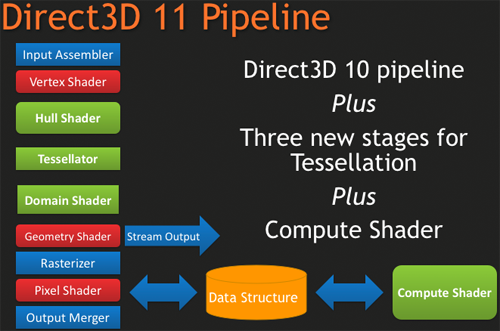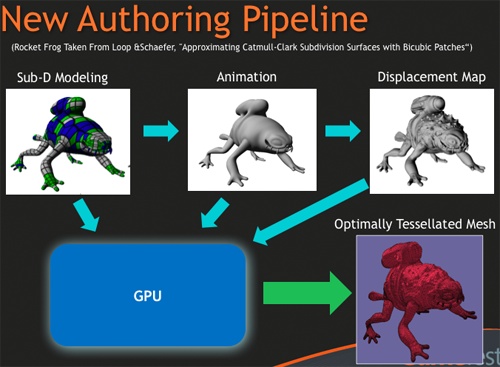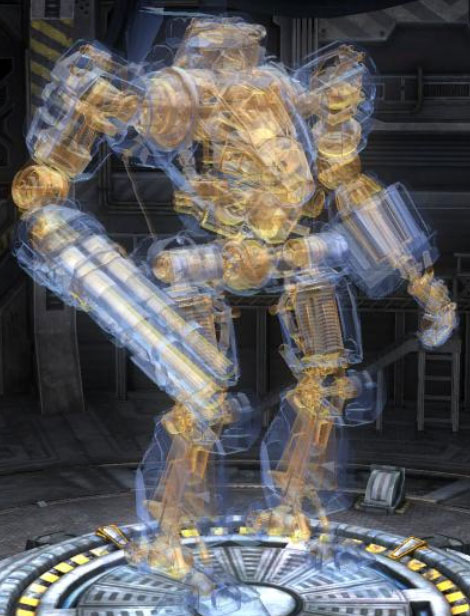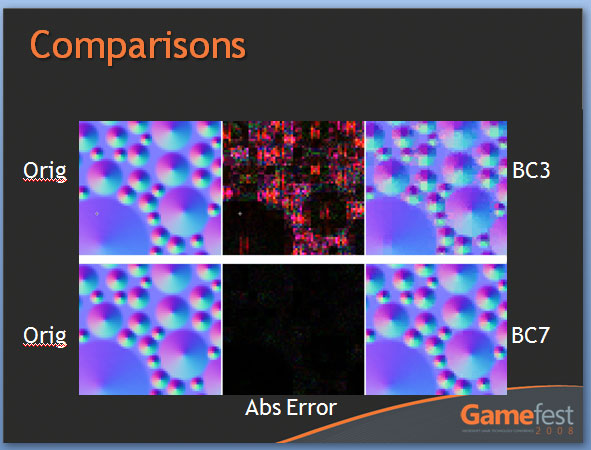AMD's Radeon HD 5870: Bringing About the Next Generation Of GPUs
by Ryan Smith on September 23, 2009 9:00 AM EST- Posted in
- GPUs
DirectX11 Redux
With the launch of the 5800 series, AMD is quite proud of the position they’re in. They have a DX11 card launching a month before DX11 is dropped on to consumers in the form of Win7, and the slower timing of NVIDIA means that AMD has had silicon ready far sooner. This puts AMD in the position of Cypress being the de facto hardware implementation of DX11, a situation that is helpful for the company in the long term as game development will need to begin on solely their hardware (and programmed against AMD’s advantages and quirks) until such a time that NVIDIA’s hardware is ready. This is not a position that AMD has enjoyed since 2002 with the Radeon 9700 and DirectX 9.0, as DirectX 10 was anchored by NVIDIA due in large part to AMD’s late hardware.
As we have already covered DirectX 11 in-depth with our first look at the standard nearly a year ago, this is going to be a recap of what DX11 is bringing to the table. If you’d like to get the entire inside story, please see our in-depth DirectX 11 article.
DirectX 11, as we have previously mentioned, is a pure superset of DirectX 10. Rather than being the massive overhaul of DirectX that DX10 was compared to DX9, DX11 builds off of DX10 without throwing away the old ways. The result of this is easy to see in the hardware of the 5870, where as features were added to the Direct3D pipeline, they were added to the RV770 pipeline in its transformation into Cypress.

New to the Direct3D pipeline for DirectX 11 is the tessellation system, which is divided up into 3 parts, and the Computer Shader. Starting at the very top of the tessellation stack, we have the Hull Shader. The Hull Shader is responsible for taking in patches and control points (tessellation directions), to prepare a piece of geometry to be tessellated.
Next up is the tesselator proper, which is a rather significant piece of fixed function hardware. The tesselator’s sole job is to take geometry and to break it up into more complex portions, in effect creating additional geometric detail from where there was none. As setting up geometry at the start of the graphics pipeline is comparatively expensive, this is a very cool hack to get more geometric detail out of an object without the need to fully deal with what amounts to “eye candy” polygons.
As the tesselator is not programmable, it simply tessellates whatever it is fed. This is what makes the Hull Shader so important, as it’s serves as the programmable input side of the tesselator.
Once the tesselator is done, it hands its work off to the Domain Shader, along with the Hull Shader handing off its original inputs to the Domain Shader too. The Domain Shader is responsible for any further manipulations of the tessellated data that need to be made such as applying displacement maps, before passing it along to other parts of the GPU.

The tesselator is very much AMD’s baby in DX11. They’ve been playing with tesselators as early as 2001, only for them to never gain traction on the PC. The tesselator has seen use in the Xbox 360 where the AMD-designed Xenos GPU has one (albeit much simpler than DX11’s), but when that same tesselator was brought over and put in the R600 and successive hardware, it was never used since it was not a part of the DirectX standard. Now that tessellation is finally part of that standard, we should expect to see it picked up and used by a large number of developers. For AMD, it’s vindication for all the work they’ve put into tessellation over the years.
The other big addition to the Direct3D pipeline is the Compute Shader, which allows for programs to access the hardware of a GPU and treat it like a regular data processor rather than a graphical rendering processor. The Compute Shader is open for use by games and non-games alike, although when it’s used outside of the Direct3D pipeline it’s usually referred to as DirectCompute rather than the Compute Shader.
For its use in games, the big thing AMD is pushing right now is Order Independent Transparency, which uses the Compute Shader to sort transparent textures in a single pass so that they are rendered in the correct order. This isn’t something that was previously impossible using other methods (e.g. pixel shaders), but using the Compute Shader is much faster.

Other features finding their way into Direct3D include some significant changes for textures, in the name of improving image quality. Texture sizes are being bumped up to 16K x 16K (that’s a 256MP texture) which for all practical purposes means that textures can be of an unlimited size given that you’ll run out of video memory before being able to utilize such a large texture.
The other change to textures is the addition of two new texture compression schemes, BC6H and BC7. These new texture compression schemes are another one of AMD’s pet projects, as they are the ones to develop them and push for their inclusion in DX11. BC6H is the first texture compression method dedicated for use in compressing HDR textures, which previously compressed very poorly using even less-lossy schemes like BC3/DXT5. It can compress textures at a lossy 6:1 ratio. Meanwhile BC7 is for use with regular textures, and is billed as a replacement for BC3/DXT5. It has the same 3:1 compression ratio for RGB textures.
We’re actually rather excited about these new texture compression schemes, as better ways to compress textures directly leads to better texture quality. Compressing HDR textures allows for larger/better textures due to the space saved, and using BC7 in place of BC3 is an outright quality improvement in the same amount of space, given an appropriate texture. Better compression and tessellation stand to be the biggest benefactors towards improving the base image quality of games by leading to better textures and better geometry.
We had been hoping to supply some examples of these new texture compression methods in action with real textures, but we have not been able to secure the necessary samples in time. In the meantime we have Microsoft’s examples from GameFest 2008, which drive the point home well enough in spite of being synthetic.

Moving beyond the Direct3D pipeline, the next big feature coming in DirectX 11 is better support for multithreading. By allowing multiple threads to simultaneously create resources, manage states, and issue draw commands, it will no longer be necessary to have a single thread do all of this heavy lifting. As this is an optimization focused on better utilizing the CPU, it stands that graphics performance in GPU-limited situations stands to gain little. Rather this is going to help the CPU in CPU-limited situations better utilize the graphics hardware. Technically this feature does not require DX11 hardware support (it’s a high-level construct available for use with DX10/10.1 cards too) but it’s still a significant technology being introduced with DX11.
Last but not least, DX11 is bringing with it High Level Shader Language 5.0, which in turn is bringing several new instructions that are primarily focused on speeding up common tasks, and some new features that make it more C-like. Classes and interfaces will make an appearance here, which will make shader code development easier by allowing for easier segmentation of code. This will go hand-in-hand with dynamic shader linkage, which helps to clean up code by only linking in shader code suitable for the target device, taking the management of that task out of the hands of the coder.










327 Comments
View All Comments
Zool - Friday, September 25, 2009 - link
"The GT300 is going to blow this 5870 away - the stats themselves show it, and betting otherwise is a bad joke, and if sense is still about, you know it as well."If not than it would be a sad day for nvidia after more than 2 years of nothing.
But the 5870 can still blow away any other card around. With DX11 fixed tesselators in pipeline and compute shader postprocessing (which will finaly tax the 1600 stream procesors)it will look much better than curent dx9. The main advantage of this card is the dx11 which of course nvidia doesnt hawe. And maybe the dewelopers will finaly optimize for the ati vector architecture if there isnt any other way meant to be played(payed) :).
Actualy nvidia couldnt shrink the last gen to 40nm with its odd high frequency scalar shaders (which means much more leakage) so i wouldent expect much more from nvidia than double the stats and make dx11 either.
SiliconDoc - Friday, September 25, 2009 - link
Here more new NVidia cards, so the fasle 2 years complaint is fixzling fast.Why this hasn't been mentioned here at anadtech yet I'm not sure, but of course...
http://www.fudzilla.com/content/view/15698/1/">http://www.fudzilla.com/content/view/15698/1/
Gigabyte jumps the gun with 40nm
According to our info, Nvidia's GT 220, 40nm GT216-300 GPU, will be officially announced in about three weeks time.
The Gigabyte GT 220 works at 720MHz for the core and comes with 1GB of GDDR3 memory clocked at 1600MHz and paired up with a 128-bit memory interface. It has 48 stream processors with a shader clock set at 1568MHz.
--
See, there's a picture as well. So, it's not like nothing has been going on. It's also not "a panicky response to regain attention" - it is the natural progression of movement to newer cores and smaller nm processes, and those things take time, but NOT the two years plus ideas that spread around....
SiliconDoc - Friday, September 25, 2009 - link
The GT200 was released on June 16th and June17th, 2008, definitely not more than 2 years ago, but less.The 285 (nm die shrink) on January 15th, 2009, less than 1 year ago.
The 250 on March 3rd this year, though I wouldn't argue you not wanting to count that.
I really don't think I should have to state that you are so far off the mark, it is you, not I, that might heal with correction.
Next, others here, the article itself, and the ati fans themselves won't even claim the 5870 blows away every other card, so that statement you made is wrong, as well.
You could say every other single core card - no problem.
Let's hope the game scenes do look much better, that would be wonderful, and a fine selling point for W7 and DX11 (and this casrd if it is, or remains, the sole producer of your claim).
I suggest you check around, the DX11 patch for Battleforge is out, so maybe you can find confirmation of your "better looking" games.
" Actualy nvidia couldnt shrink the last gen to 40nm with its odd high frequency scalar shaders "
I believe that is also wrong, as they are doing so for mobile.
What is true is ATI was the ginea pig for 40nm, and you see, their yeilds are poor, while NVidia, breaking in later, has had good yeilds on the GT300, as stated by - Nvidia directly, after ATI made up and spread lies about 9 or less per wafer. (that link is here, I already posted it)
---
If Nvidia's card doubles performance of the 285, twice the frames at the same reso and settings, I will be surprised, but the talk is, that or more. The stats leaked make that a possibility. The new MIMD may be something else, I read 6x-15x the old performance in certain core areas.
What Nvidia is getting ready to release is actually EXCITING, is easily described as revolutionary for videocards, so yes, a flop would be a very sad day for all of us. I find it highly unlikely, near impossible, the silicon is already being produced.
The only question yet is how much better.
Zool - Friday, September 25, 2009 - link
I want to note also that the 5870 is hard to find which means the 40nm tsmc is still far from the last gen 55nm. After they manage it to get on the 4800 level the prices will be different. And maybe the gt300 is still far away.mapesdhs - Friday, September 25, 2009 - link
Is there any posting moderation here? Some of the flame/troll posts
are getting ridiculous. The same thing is happening on toms these days.
Jarred, best not to reply IMO. I don't think you're ever going to get
a logical response. Such posts are not made with the intent of having
a rational discussion. Remember, as Bradbury once said, it's a sad
fact of nature that half the population have got to be below average. :D
Ian.
Zool - Friday, September 25, 2009 - link
I would like to see some more tests on power load. Actualy i dont think there are too many people with 2560*1600 displays. There are still plenty people with much lower resolutions like 1680*1050 and play with max imagequality. With VSync on if u reduce 200fps to 60fps u get much less gpu temps and also power load.(things like furmark are miles away from real world) On LCD there is no need to turn it off just if u benchmark and want more fps. I would like to see more power load tests with diferent resolutions and Vsync on.(And of course not with crysis)Also some antialiasing tests, the adaptive antialiasing on 5800 is now much faster i read.And the FSAA is of course blurry, it was always so. If u render the image in 5120*3200 on your 2560*1600 display and than it combines the quad pixels it will seems like its litle washed out. Also in those resolution even the highress textures will begin to pixalate even in closeup so the combined quad pixels wont resemble the original. Without higher details in game the FSAA in high resolution will just smooth the image even more. Actualy it always worked this way even on my gf4800.
SiliconDoc - Friday, September 25, 2009 - link
PS - a good friend of mine has an ATI HD2900 pro with 320 shaders (a strange one not generally listed anywhere) that he bought around the time I was showing him around the egg cards and I bought an ATI card as well.Well, he's a flight simmer, and it has done quite well for him for a about a year, although in his former Dell board it was LOCKED at 500mhz 503mem 2d and 3d, no matter what utility was tried, and the only driver that worked was the CD that came with it.
Next on a 570 sli board he got a bit of relief, an with 35 various installs or so, he could sometimes get 3d clocks to work.
Even with all that, it performed quite admirably for the strange FS9 not being an NVidia card.
Just the other day, on his new P45 triple pci-e slot, after 1-2 months running, another friend suggested he give OCCT a go, and he asked what is good for stability (since he made 1600fsb and an impressive E4500 (conroe) 200x11/2200 stock to a 400x8/ 3200mhz processor overclock for the past week or two). "Ten minutes is ok an hour is great" was the response.
Well, that HD2900pro and OCCT didn't like eachother much either - and DOWN went the system, 30 seconds in, cooking that power supply !
--- LOL ---
Now that just goes to show you that hiding this problem with the 4870 and 4890 for so many months, not a peep here... is just not good for end users...
---
Thanks a lot tight lipped "nothing is wrong with ATI cards" red fans. Just wonderful.
---
He had another PS and everything else is OK
, and to be quite honest and frank and fair as I near always am, that HD2900pro still does pretty darn good for his flight simming ( and a few FPS we all play sometimes) and he has upgraded EVERYTHING else already at least once, so on that card, well done for ATI. (well depsite the drivcer issues, 3d mhz issues, etc)
Oh, and he also has a VERY NICE 'oc on it now(P45 board) - from 600/800 core/mem 3D to 800/1000, and 2d is 500/503, so that's quite impressive.
SiliconDoc - Wednesday, September 30, 2009 - link
Ahh, isn't that typical, the 3 or 4 commenters raving for ati "go dead silent" on this furmark and OCCT issue.--
"It's ok we never mentioned it for a year plus as we guarded our red fan inner child."
(Ed. note: We "heard" nvidia has a similar implementation")
WHATEVER THAT MEANS !
---
I just saw (somewhere else) another red fanatic bloviating about his 5870 only getting up to 76C in Furmark. ROFLMAO
--
Aww, the poor schmuck didn't know the VRM's were getting cut back and it was getting throttled from the new "don't have a heat explosion" tiny wattage crammed hot running ati core.
SiliconDoc - Friday, September 25, 2009 - link
Well you brought to mind another sore spot for me.In the article, when the 4870 and 4890 FAIL furmark and OCCT, we are suddenly told, after this many MONTHS, that a blocking implementation in ati driver version 9.2 was put forth by ATI, so their cards wouldn't blow to bits on furmark and OCCT.
I for one find that ABSOLUTELY AMAZING that this important information took this long to actually surface at red central - or rather, I find it all too expected, given the glaring bias, ever present.
Now, the REASON this information finally came forth, other thanb the epic fail, is BECAUSE the 5870 has a "new technology" and no red fan site can possibly pass up bragging about something new in a red core.
So the brag goes on, how protection bits in the 5870 core THROTTLE BACK the VRM's when heat issues arise, hence allowing for cheap VRM's & or heat dissipation issues to divert disaster.
That's wonderful, we finally find out about ANOTHER 4870 4980 HEAT ISSUE, and driver hack by ATI, and a failure to RUN THE COMMON BENCHMARKS we have all used, this late in the game.
I do have to say, the closed mouthed rabid foam contained red fans are to appluaded for their collective silence over this course of time.
Now, further bias revealed in tha article - the EDITOR makes sure to chime in, and notes ~"we have heard Nvidia has a similar thing".
What exactly that similar thing is, and whom the Editor supposedly heard it from, is never made clear.
Nonetheless, it is a hearty excuse and edit for, and in favor of, EXCUSING ATI's FAILURES.
Nonetheless, ALL the nvidia cards passed all the tests, and were 75% in number to the good cooler than the ATI's that were- ATI all at 88C-90C, but, of course, the review said blandly in a whitewash, blaming BOTH competitors nvidia and ati - "temps were all over the place" (on load).
(The winning card GTX295 @ 90C, and 8800GT noted 92C *at MUCH reduced case heat and power consumption, hence INVALID as comparison)
Although certain to mention the GT8800 at 92C, no mention of the 66C GTX250 or GTX260 winners, just the GTX275 @ 75C, since that was less of a MAJOR EMBARRASSMENT for the ATI heat load monsters !
Now THERE'S A REAL MONSTER - AND THAT'S ALL OF THE ATI CARDS TESTED IN THIS REVIEW ! Not just the winning nvidia, while the others that matter (can beat 5870 in sli or otherwise) hung 24C to 14C lower under load.
So, after all that, we have ANOTHER BIAS, GLARING BIAS - the review states " there are no games we know of, nor any we could find, that cause this 5870 heat VRM throttling to occur".
In other words, we are to believe, it was done in the core, just for Furmark and OCCT, or, that it was done as precaution and would NEVER come into play, yes, rest assured, it just won't HAPPEN in the midst of a heavy firefight when your trigger finger is going 1,000mph...
So, I found that just CLASSIC for this place. Here is another massive heat issue, revealed for the first time for 4870 and 4890 months and months and months late, then the 5870 is given THE GOLDEN EXCUSE and massive pass, as that heat reducing VRM cooling voltage cutting framerate lowering safety feature "just won't kick in on any games".
ROFL
I just can't help it, it's just so dang typical.
DigitalFreak - Friday, September 25, 2009 - link
Looks like SnakeOil has yet ANOTHER account.